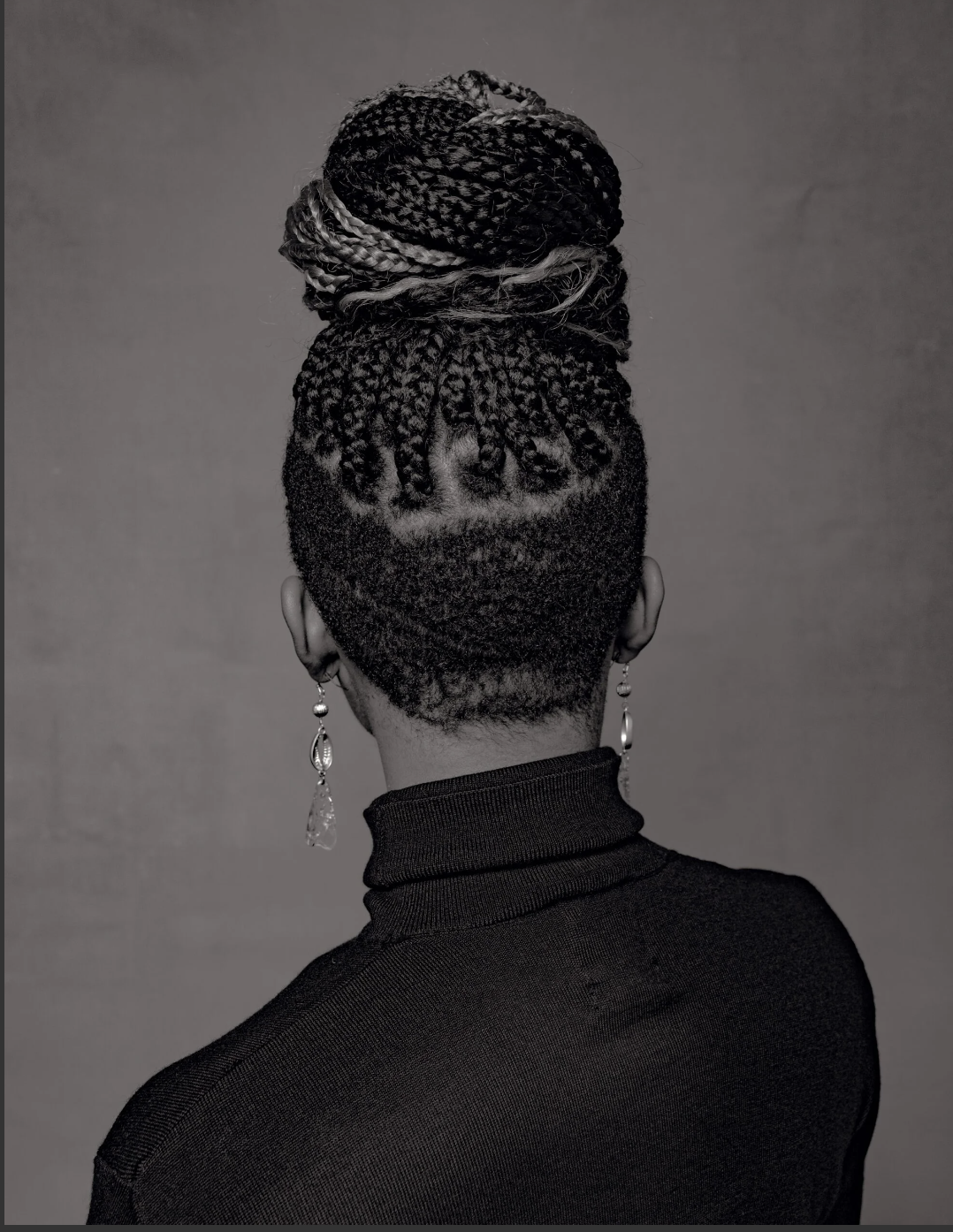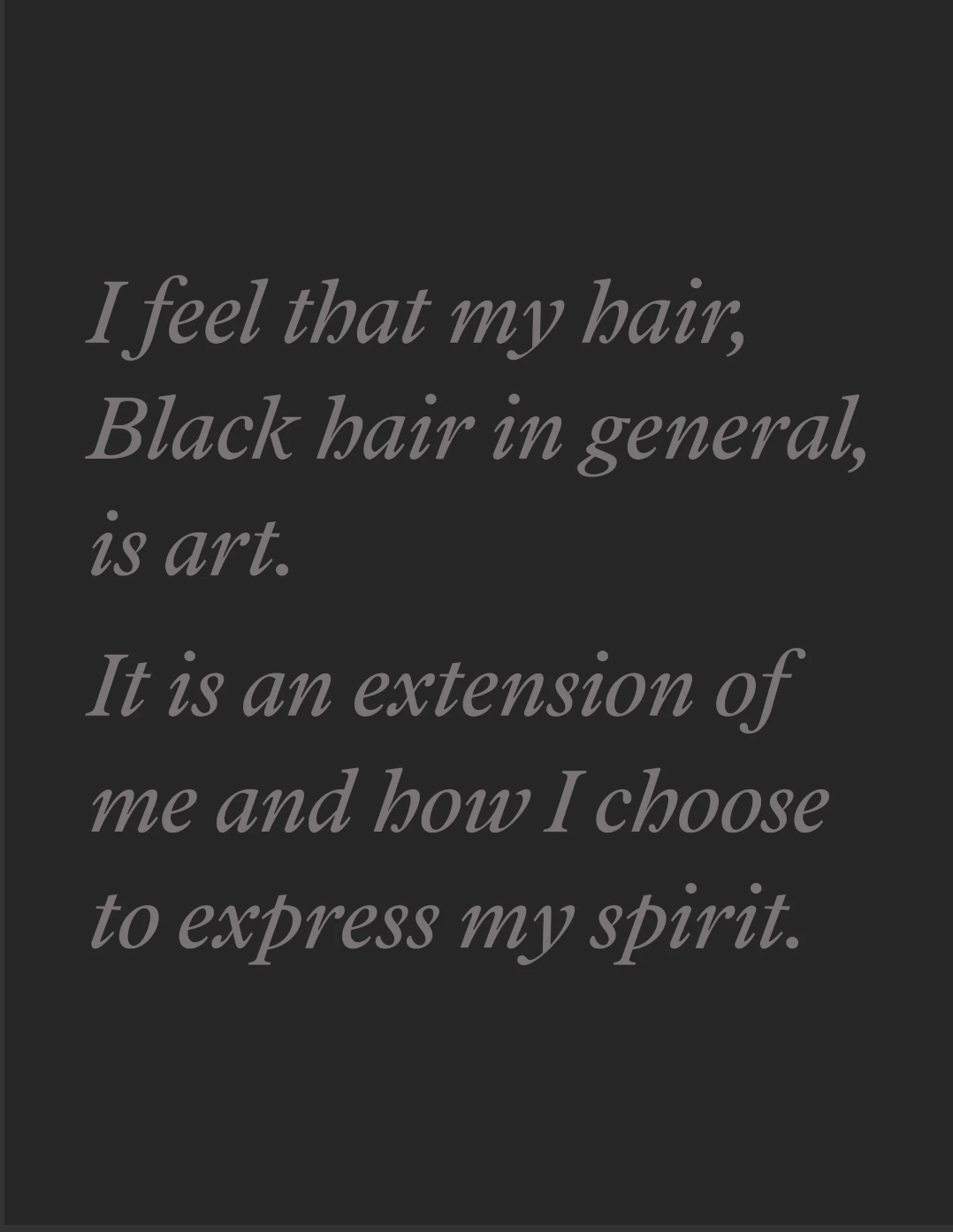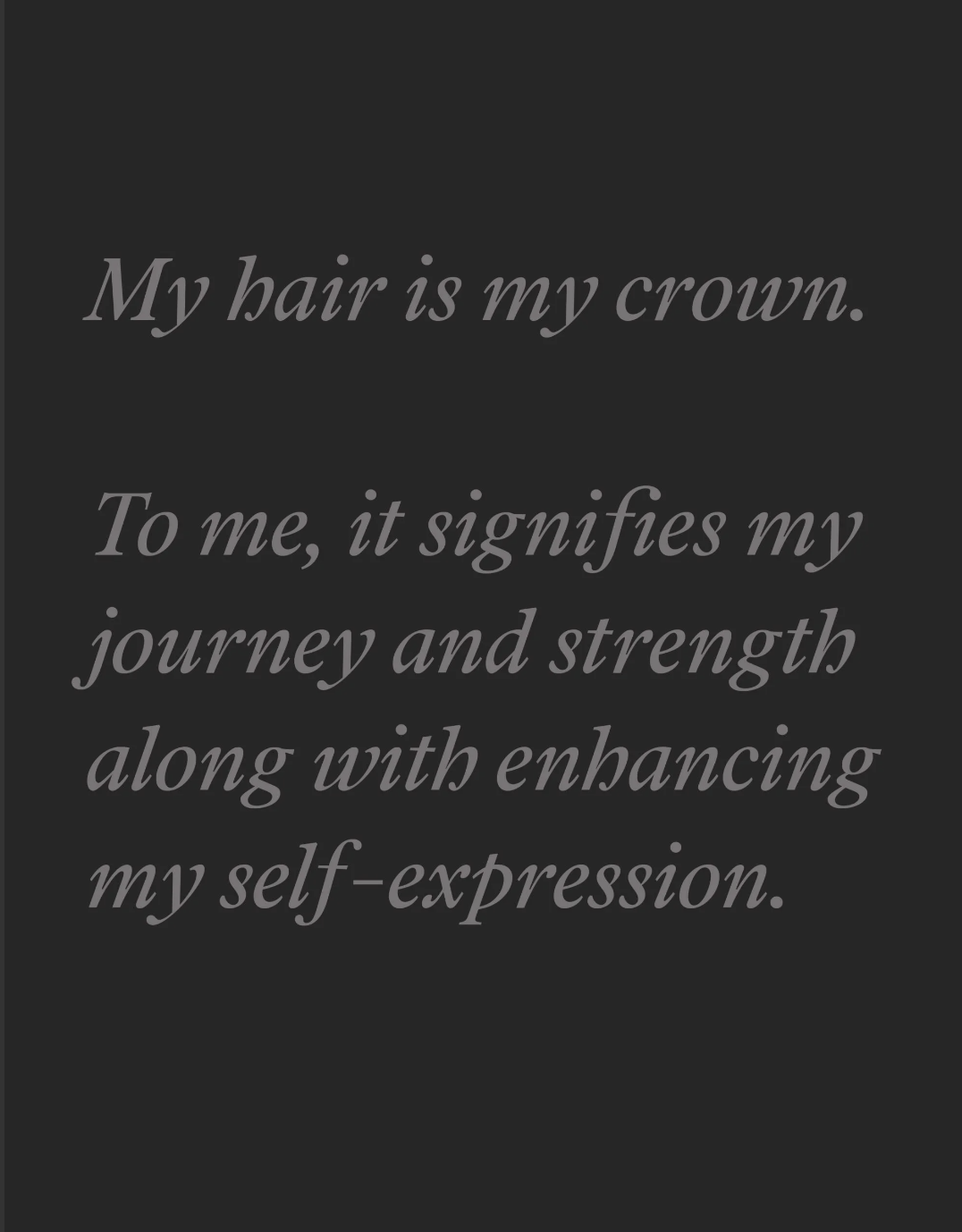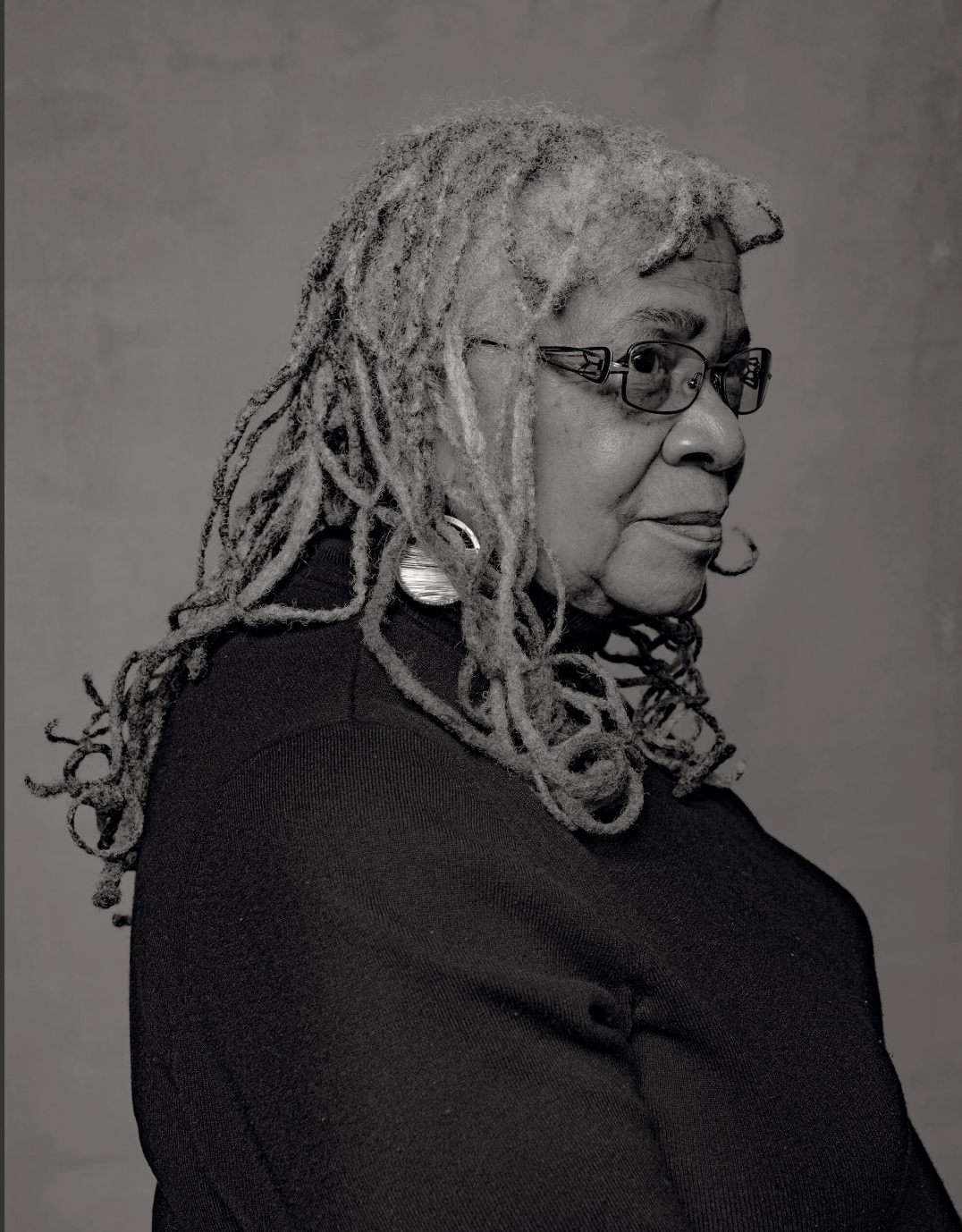Pause and pondr
What does hair have to do with the workplace?
With the passage of the CROWN Act in several states, there is increasing support to make hair discrimination illegal nationwide at work and in schools.
DID YOU KNOW?
Black hair is a source of pride and individuality. It serves a measure of defiance against society’s penchant for rejecting originality in appearance. This portrait series explores the intersection of hair as a marker of identity, and how that can support and conflict with the corporate-workplace culture in America.
WHAT YOU’LL LEARN
Understand one form of racial discrimination that occurs in workplace settings
Recognize that racial discrimination can manifest in workplace norms like appearance and clothing
Consider how professional norms get established within the workplace
What hair discrimination?
A 2020 study by Duke University’s Fuqua School of Business and Michigan State University Broad College of Business reported that Black women with natural hair are still viewed as less professional and less competent and are less likely to be referred for job interviews. And according to another 2019 study by the personal care brand Dove, Black women were 1 ½ times more likely to be sent home from the workplace because of their hair than other women.
Without specific federal legislation to ban hair discrimination, workplace policies have been left up to interpretation — there is often an assumption that all employees can wear their hair in a manner that lays flat or that the accessory choices of one group of people are preferred over another. To circumvent this, the Creating a Respectful and Open World for Natural Hair (CROWN) Act has been passed in 13 states and is gaining traction to become federal law, if adopted by the U.S. House of Representatives. The CROWN Act bars discrimination against race-based hairstyles and textures such as braids, locs, twists and knots being worn in the workplace and public schools.
“We have to unpack notions of what it means to be professional, what it means to be polished, what it means to be put together,” says Kristin Rowe, an assistant professor of American Studies at California State University, Fullerton, who specializes in hair and beauty culture.
Eighty percent of Black women were more likely than white women to agree with this statement: “I have to change my hair from its natural state to fit in at the office.”
Source: 2019 Dove CROWN research study
What are the roots of hair discrimination?
In their book “Hair Story: Untangling the Roots of Black Hair in America,” authors Ayana D. Byrd and Lori L. Tharps detail the history and perceptions of Black hair. Hair length and style played an important role in West African cultures, signifying status, region, families, religion, ethnic identity and more. During the transatlantic slave trade, heads were shaved to prevent the spread of diseases, but this act also eliminated one of the identifying factors of the enslaved person’s origins.
For enslaved Africans, their hair was deemed wooly and unattractive. Yet at the same time, it was seen as a source of temptation. In 1786, in New Orleans, the Spanish colonial governor passed a law prohibiting free Black women from wearing their beautifully adorned hair uncovered, so as not to attract the attention of white men. These policies, which were called the Tignon Laws, required that women wear a headdress in an effort to police Black hair.
What can be done about it?
Nona Austin-King, founder and CEO of the Career Catalyst Group in Houston, Texas, has had a successful career working in the corporate sector. During this time, however, she experienced some form of unwanted attention about her hairstyles.
Austin-King often wore her natural hair in a ponytail for easy maintenance. Some days, however, she would straighten it for a change of style. It was during those times she received the most attention. Her colleagues would say, “‘Oh my goodness, I love your hair, you should wear it like that more often.” On other occasions, Austin-King would wear a wig, which also became a topic of discussion. “I didn’t want to have a conversation about it,” Austin-King says.
Like Austin-King, Black men and women often get singled out about their hairstyles or texture — or worse, their hair is touched without permission or provocation. Compliments are welcome, but they can be made in a way that avoids making people feel uncomfortable or objectified.
On a macro level, Rowe also says that workplaces need to reevaluate their policies. “We have a culture where dress codes say ‘no distracting hairstyles,’ which can be code for Black hairstyles. … We need to create a culture that’s inclusive,” she says.
Pondr This
What images come to mind when you think of a “professional” hairstyle in the workplace?
Have you ever had to think about the way you wear your hair to work in order to fit in or be perceived as qualified to do your job?
How can we approach co-workers’ personal style, including hair, in the workplace? How would you react if someone walked up and touched your hair without asking?
FOR LEADERS
How do you feel about coworkers who embrace their cultural identities through their style and dress?
What sort of standards for appearance are reasonable in the workplace?
Why might it be important for people in your workplace to be free to present themselves authentically?
Explore The Stories
Untangling Hair Discrimination: A toolkit
Inch by inch, protection for natural hair grows
‘It’s a feeling unlike anything in the world’
Crowning glory: What a Black woman's hair says about her
Among women, hairstyles are intertwined with appearance and identity. For Black women, this is particularly true. In this portrait series, several Black women describe how their styles affect their experiences in the workplace.
Published on August 2, 2022
-
Description text goes here
Topic in Review
Summary: We delved into new legislation that aims to ban hair discrimination in schools and at work. We also examined perception of Black hair in history and steps we can take to build a more inclusive workplace.
Continue Your Journey
Along with the workplace, CROWN Act legislation could have a significant impact in schools. Cases of children being reprimanded, suspended, or even expelled over their hair have been well documented.
One most recent example, comes from Texas, where two Black students were suspended over their locs in 2020. In July 2021, the Department of Justice stepped in to defend the two students in their legal dispute with the school district.
The issue of hair discrimination also brings attention to the larger systemic racism and implicit bias experienced by Black students in schools. Previous research has found that Black students in middle school and high school were four times as likely to be suspended as white students.
The issue has played out in other arenas, including on the global stage during the 2021 Tokyo Olympics, when the use of swimming caps designed for natural black hair was rejected by the International Swimming Federation (FINA). The governing body claimed that the caps did not fit “the natural form of the head.” The public backlash was swift, and now FINA is in talks with the Black-owned cap designer.
Alice Dearing, Britain’s first Black Olympic swimmer, told BuzzFeed News, “I know a lot of people want to be on the right side of history with this. So I'm very optimistic that there's going to be a positive outcome from it.”
The NAACP Legal Defense and Educational Fund and the official site for the CROWN Act campaign also has helpful information on the legislation.
Further readings:
— “Hair Story: Untangling the Roots of Black Hair in America” by Lori Tharps and Ayana Byrd
Tying the personal to the political and the popular, “Hair Story” takes a chronological look at the culture behind the ever-changing state of Black hair from 15th-century Africa to the present-day United States.
— “Resistance and Empowerment in Black Women's Hair Styling” by Elizabeth Johnson
Elizabeth Johnson's book is a historical look at Black women’s identity as defined by the way they style and groom their hair.
— “The Natural Hair Bias in Job Recruitment,” by Christy Zhou Koval and Ashleigh Shelby Rosette
This Duke University Fuqua School of Business and Michigan State University study explored bias against Black women with natural hairstyles in job recruitment.














